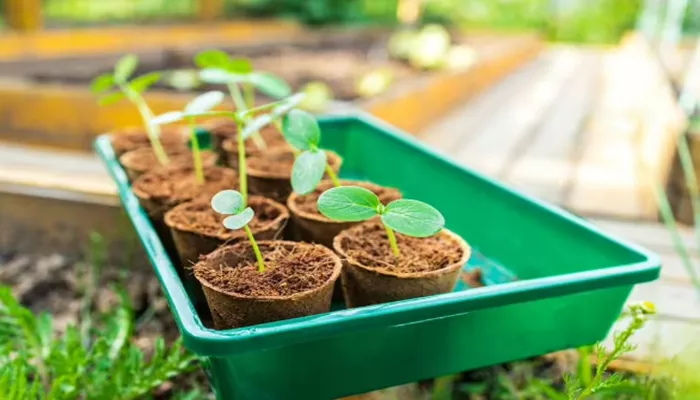Powdery mildew is a common and troublesome plant disease caused by various species of fungi. Its characteristic appearance—a white, powdery substance on plant surfaces—can be both unsightly and damaging. This article delves into the factors leading to powdery mildew, its effects on plants, and practical measures to prevent and manage this pervasive issue.
What Is Powdery Mildew?
Powdery mildew refers to a range of fungal diseases that create a white, powder-like coating on leaves, stems, and buds. These fungi belong to the order Erysiphales and are distinguished by their ability to thrive in warm, dry conditions. Unlike many other fungal diseases, powdery mildew does not require free water to spread; instead, it thrives in conditions where humidity is high but precipitation is low.
Causes of Powdery Mildew
Fungal Pathogens
The primary cause of powdery mildew is a group of fungi known as Erysiphales. These fungi are obligate parasites, meaning they can only grow on living plants. Common species include:
Erysiphe cichoracearum: Often affects vegetables and ornamentals.
Sphaerotheca pannosa: Known for its impact on roses and other ornamental plants.
Podosphaera leucotricha: Targets apples and related plants.
Each species has specific host preferences, but they share a similar lifestyle and lifecycle, contributing to the widespread nature of powdery mildew.
Environmental Conditions
The development of powdery mildew is heavily influenced by environmental conditions. Key factors include:
Temperature: Powdery mildew thrives in temperatures between 60-80°F (15-27°C). These temperatures are ideal for fungal growth and reproduction.
Humidity: While the fungi do not require free water, high humidity and dew can promote spore germination and disease spread. Dry conditions, however, are necessary for the spores to disperse effectively.
Shade: Plants growing in shaded or partially shaded areas are more susceptible to powdery mildew. Reduced light levels can increase humidity around the plant, creating a more favorable environment for the fungi.
Plant Stress
Plants under stress are more susceptible to powdery mildew. Factors contributing to plant stress include:
Nutrient Deficiencies: Lack of essential nutrients can weaken plants, making them more vulnerable to disease.
Water Stress: Both drought and overwatering can stress plants and impact their resistance to diseases.
Poor Air Circulation: Dense plantings or improper spacing can lead to reduced airflow around plants, increasing humidity and creating an ideal environment for fungal growth.
Symptoms of Powdery Mildew
Recognizing the symptoms of powdery mildew is crucial for early intervention. Typical signs include:
White Powdery Coating: The most obvious symptom is a white or grayish powdery substance on the upper surfaces of leaves, stems, and buds.
Leaf Curling and Distortion: Infected leaves may curl, twist, or become distorted.
Yellowing: As the disease progresses, leaves may turn yellow and eventually drop off.
Reduced Growth: Powdery mildew can stunt plant growth and reduce overall yield in crops.
Impact on Plants
Powdery mildew can have significant effects on plant health and productivity. Its impacts include:
Reduced Photosynthesis: The white coating on leaves can block sunlight, reducing the plant’s ability to photosynthesize and produce energy.
Weakened Plants: Prolonged infection can weaken plants, making them more susceptible to other diseases and pests.
Lower Yields: In crops, powdery mildew can lead to reduced fruit and flower production, impacting overall yield and quality.
Prevention and Management Strategies
Effective management of powdery mildew involves a combination of cultural practices, resistant plant varieties, and chemical treatments. Here are some strategies:
Cultural Practices
Improve Air Circulation: Space plants appropriately to ensure good airflow and reduce humidity around plant surfaces.
Water Wisely: Water plants at the base rather than overhead to minimize leaf wetness. Ensure consistent moisture without overwatering.
Prune Affected Parts: Regularly remove and dispose of infected plant parts to reduce the spread of spores.
Plant Varieties
Choose Resistant Varieties: Select plant varieties that are resistant to powdery mildew. Many ornamental and crop plants have cultivars with improved resistance.
Enhance Plant Health: Maintain overall plant health through proper nutrition and care to enhance resistance to diseases.
Chemical Treatments
Fungicides: Apply fungicides labeled for powdery mildew according to manufacturer instructions. Common fungicides include sulfur, potassium bicarbonate, and certain synthetic options.
Natural Remedies: Some natural remedies, such as neem oil or homemade mixtures of milk and water, can help control powdery mildew. However, their effectiveness may vary.
Novel Approaches and Future Directions
Research continues to advance our understanding and management of powdery mildew. Innovative approaches include:
Biological Control: Utilizing natural predators or antagonistic microbes to manage powdery mildew populations.
Genetic Research: Developing plant varieties with enhanced resistance through genetic modification or traditional breeding methods.
Integrated Pest Management (IPM): Combining various management strategies into a comprehensive plan to effectively control powdery mildew while minimizing environmental impact.
see also: What Does Scale Insects Look like on Plants?
Summary
Powdery mildew is a widespread plant disease caused by a range of fungal pathogens. Understanding the causes, symptoms, and impacts of powdery mildew is crucial for effective management. By adopting cultural practices, choosing resistant plant varieties, and applying appropriate treatments, gardeners and farmers can reduce the incidence and severity of this troublesome disease. Ongoing research and innovative approaches continue to enhance our ability to manage powdery mildew and protect plant health.
By staying informed and proactive, you can minimize the impact of powdery mildew and ensure a healthier, more resilient garden or crop.


